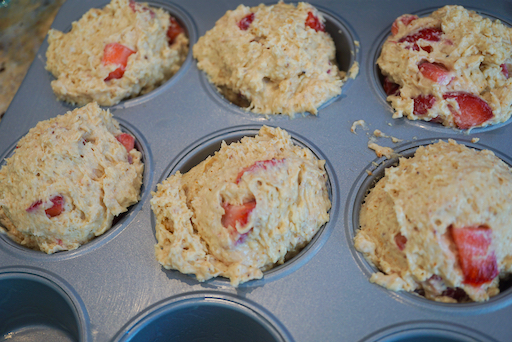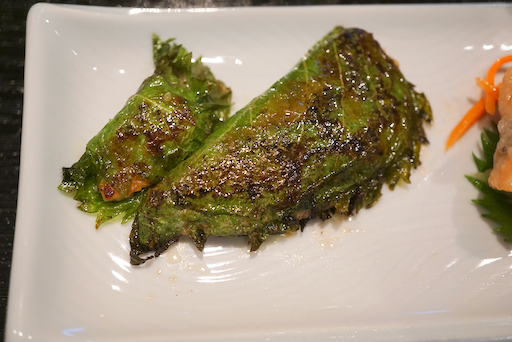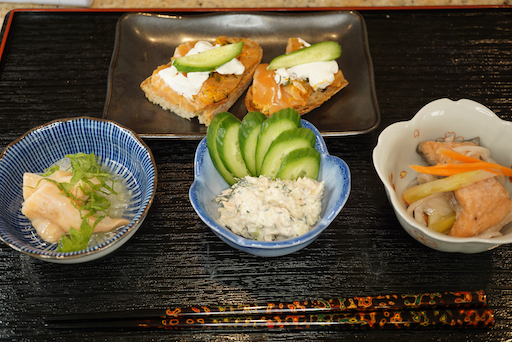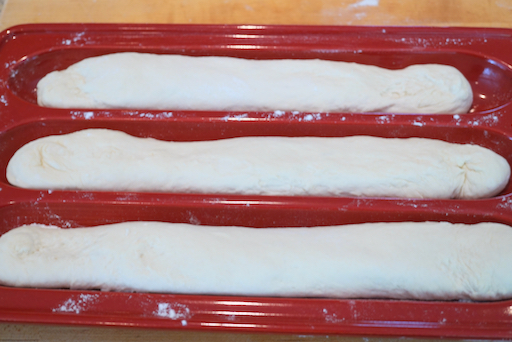This is one of my wife's muffin projects. She made a very similar muffin using blueberry but this time she used fresh strawberries.
The strawberries don't show up on the cut surface as well as the blueberries did in the blueberry version of this muffin. The strawberries lost their color but the strawberry flavor came through.
The basic muffin recipe came from “Pastry from La Brea Bakery”.
Ingredients:(for 12 muffins)
1/2 cup (3 oz.) almonds deeply toasted. (The toasting is what gives the muffins a rich flavor)
3/4 cup sugar
1 stick plus 2 tbs. (5 oz.) butter
3 large eggs
3 cups all-purpose flour
1 tbs. plus 1 tsp baking powder
>3/4 tsp. baking soda
1/2 tsp. salt
2 tsp. vanilla
1 1/2 cup buttermilk
1 cup chopped strawberries.

The ground-up toasted almonds gave nice rich nutty flavor and texture to the muffin. The strawberries lost their color and shrank when the muffins were cooked leaving spaces around them. Although the strawberry flavor is there, we both agreed that if you are adding fruit, blueberry is better.
1/2 cup (3 oz.) almonds deeply toasted. (The toasting is what gives the muffins a rich flavor)
3/4 cup sugar
1 stick plus 2 tbs. (5 oz.) butter
3 large eggs
3 cups all-purpose flour
1 tbs. plus 1 tsp baking powder
>3/4 tsp. baking soda
1/2 tsp. salt
2 tsp. vanilla
1 1/2 cup buttermilk
1 cup chopped strawberries.
Directions
In the bowl of a food processor fitted with a steel blade pulse the almonds until they are the texture fine meal. Add the butter and cream until smooth. Add the sugar and process until fluffy. Add the eggs and cream until light and fluffy.
In the bowl of a food processor fitted with a steel blade pulse the almonds until they are the texture fine meal. Add the butter and cream until smooth. Add the sugar and process until fluffy. Add the eggs and cream until light and fluffy.

In a separate bowl mix the flour, baking powder, baking soda and salt. Add the vanilla to the buttermilk
Add the butter mixture to the flour mixture alternately with the buttermilk mixture. Fold in the strawberries (above). Put the batter into a greased muffin tin (below). Bake at 350 degree for 20 to 25 minutes.
The ground-up toasted almonds gave nice rich nutty flavor and texture to the muffin. The strawberries lost their color and shrank when the muffins were cooked leaving spaces around them. Although the strawberry flavor is there, we both agreed that if you are adding fruit, blueberry is better.


























